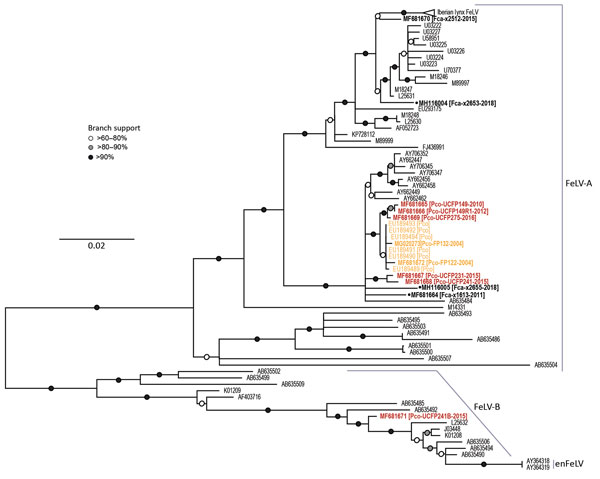Volume 25, Number 1—January 2019
Research
Multiple Introductions of Domestic Cat Feline Leukemia Virus in Endangered Florida Panthers1
Figure 4

Figure 4. Env phylogenies support relationships established in the full-genome tree and document the Florida panther FeLV-B relationship to other known recombinant viruses in Florida panthers, Florida, USA. The env tree shows FeLV-A, FeLV-B, and enFeLV sequences (neighbor-joining analysis). One Florida panther sequence (MF681671) can be found in the FeLV-B cluster, identifying it as the recombinant subgroup. Black text indicates FeLV from domestic cats, orange indicates FeLV from panthers during the historic outbreak (2002–2004), and red indicates FeLV from panthers during the contemporary outbreak (2010–2016). Bold indicates isolates sequenced in this study. Black dots indicate sequences from domestic cats in Florida. GenBank accession numbers are provided. en, endogenous; FeLV, feline leukemia virus.
1Preliminary results from this study were presented at the Ecology and Evolution of Infectious Diseases Conference, June 24–27, 2017, Santa Barbara, California, USA.